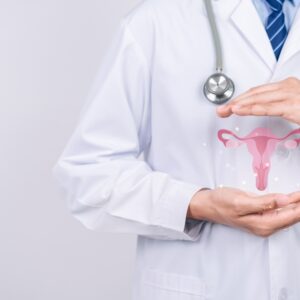Overview
Cervical cancer prevention involves a range of strategies and medical interventions aimed at reducing the risk of developing cervical cancer. These preventive measures include regular screening, vaccination, lifestyle modifications, and early treatment of precancerous conditions. By employing a comprehensive approach, cervical cancer prevention efforts significantly lower the incidence and mortality rates associated with this disease, enhancing overall women’s health and well-being.
Procedure
Cervical cancer prevention encompasses several key procedures:
- Screening Tests: Regular Pap smears and HPV tests are essential for early detection of precancerous changes and HPV infections. These tests help identify abnormal cells before they progress to cancer.
- HPV Vaccination: The human papillomavirus (HPV) vaccine is highly effective in preventing infections with HPV strains that cause cervical cancer. Vaccination is recommended for preteens but can be administered to individuals up to age 45.
- Colposcopy: If screening tests detect abnormal cells, a colposcopy may be performed. This procedure involves examining the cervix with a special microscope to identify areas of abnormal tissue that may need further evaluation or biopsy.
- Treatment of Precancerous Lesions: Procedures such as cryotherapy, laser therapy, or loop electrosurgical excision procedure (LEEP) can remove or destroy abnormal cells, preventing them from developing into cancer.
Benefits of the Laparoscopic Approach
Cervical cancer prevention offers numerous benefits, including early detection of precancerous changes, effective prevention of HPV infections, and timely treatment of abnormalities. These measures significantly reduce the risk of developing cervical cancer and improve survival rates. Additionally, preventive strategies can lower healthcare costs by reducing the need for more extensive treatments and hospitalizations associated with advanced cervical cancer.
Conditions Treated with Cervical Cancer Prevention
Cervical cancer prevention primarily addresses conditions related to HPV infections and precancerous changes in cervical cells. These include cervical dysplasia (abnormal growth of cells on the cervix), HPV infections, and other abnormalities detected through screening tests. Preventive measures are also beneficial for women with a family history of cervical cancer or other risk factors.
Risks and Considerations
While laparoscopic hemorrhoidectomy is generally safe, potential risks include bleeding, infection, scarring, urinary retention, and rare complications such as damage to nearby structures. It’s important to discuss the potential risks and benefits with a healthcare professional before undergoing the procedure.
Recovery and Follow-up
Recovery from cervical cancer prevention procedures, such as HPV vaccination or minor treatments for precancerous lesions, is generally quick. Patients may experience mild discomfort or spotting after procedures like colposcopy or LEEP. Regular follow-up appointments are essential to monitor the effectiveness of preventive measures, ensure complete healing, and detect any new abnormalities early.
Risks and Considerations
While cervical cancer prevention strategies are generally safe, potential risks vary depending on the procedure. HPV vaccination can cause mild side effects such as pain at the injection site or fever. Colposcopy and treatments for precancerous lesions may cause temporary discomfort, bleeding, or infection. It is crucial to discuss the potential risks and benefits with a healthcare professional to make informed decisions about preventive care.
Preparation and Evaluation
Before undergoing cervical cancer prevention procedures, a comprehensive evaluation is conducted, including a detailed medical history review and relevant diagnostic tests. Pre-treatment instructions may include guidelines on skincare, fasting (if necessary), and medication adjustments. These steps ensure that the patient is well-prepared for the procedure and that the preventive measures are tailored to their specific needs.
Individualized Approach
Cervical cancer prevention is highly individualized, tailored to meet the specific needs and risk factors of each patient. A healthcare professional will assess the patient’s condition, discuss the potential benefits and risks of various preventive options, and develop a personalized prevention plan. This approach ensures that care is aligned with the patient’s medical history, lifestyle, and personal preferences, promoting the best possible outcomes and satisfaction.





